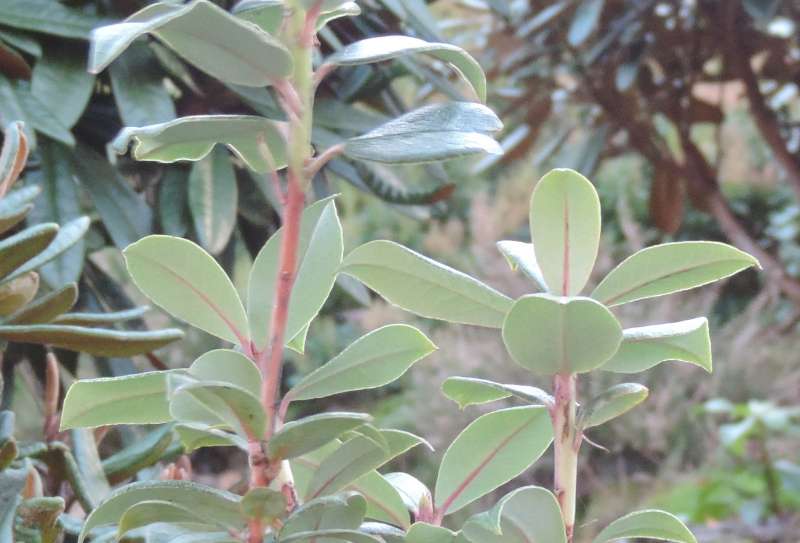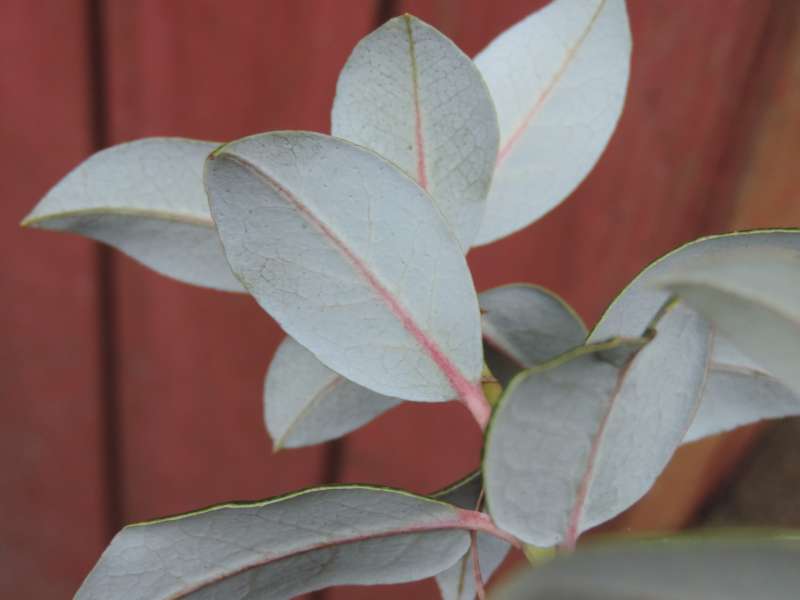Rhododendron baihuaense
Billeder af Rhododendron baihuaense
Beskrivelse
R. baihuaense (Tephropepla). Jeg syntes den er tæt på R. zaleucum – R. oreothrepes in Triflora, men jeg har ikke set blomsten (HE). Ikke så hårdfør og skal stå et beskyttet plads. Vokser vest for Nu River ved grænsen til Burma (Gaoligong Mountains, Yunnan, China).
Jens Nielsen has confirmed the identity of his 2011 collection from Yunnan which featured on the Group’s 2012 seed list numbered 11164. JN11050, previously described as “Rhododendron species: New very distinctive species, lvs glaucous underside, flowers in 3’s well developed calyx. W Yunnan 2600m” is now confirmed as Rhododendron baihuaense in a recent article in Phytotaxa.
Pam Hayward
A new species of Rhododendron (Ericaceae) from the Gaoligong Mountains, Yunnan, China, supported by morphological and DNA barcoding data
YONGPENG MA1, ZHIKUN WU1, RUIJUAN XUE1, XIAOLING TIAN1, LIANMING GAO2* & WEIBANG SUN1*
1 Kunming Botanical Garden, Kunming Institute of Botany, Chinese Academy of Sciences, Kunming 650201, P.R. China
2 Key Laboratory of Biodiversity and Biogeography, Kunming Institute of Botany, Chinese Academy of Sciences, Kunming 650201, P.R. China
*Corresponding authors: gaolm@mail.kib.ac.cn; wbsun@mail.kib.ac.cn
Abstract
Rhododendron baihuaense sp. nov. is described as a new species endemic to Yunnan, China, that has, to date, only been found in Baihualing on the eastern side of the Gaoligong Mountains. Morphologically, R. baihuaense can be readily distinguished from R. hanceanum and R. genestierianum, by its absent scales on mature leaves, only 2–5 flowers per inflorescence, the funnel-shaped flower and white corolla, and its slender and erect style. A molecular analysis based on the four standard DNA barcodes (rbcL, matK, trnH-psbA and ITS) indicates that R. baihuaense is genetically distinct from R. hanceanum and R. genestierianum, and, together with the morphological differences, is described here as a new species.
Key words: DNA barcoding, Ericaceae, Himalayas, Rhododendron, taxonomy
Introduction
Rhododendron Linnaeus (1753: 392) is one of the largest genera in Ericaceae with about 1,025 species, distributed from the northern temperate zone, throughout tropical Southeast Asia, to northeastern Australia (Chamberlain et al. 1996). There are 571 species classified in 6 subgenera in China, 405 of them endemic (Fang et al. 2005). The global biodiversity hotspot of the Hengduan Mountains spanning southwest Sichuan, northwest Yunnan, and part of eastern Tibet (Myers et al. 2000, Ge et al. 2005, Weckerle et al. 2006), is one of the centers of diversification and differentiation of Rhododendron. A total of 320 species of Rhododendron occur in this region (Fang et al. 2005). In addition, Rhododendron has a long and rich horticultural history, and numerous plant hunters from all over the world have been drawn to Southwest China on their account (Gibbs et al. 2011).
The Gaoligong Mountains
The Gaoligong Mountains are part of the Hengduan Mountain chain, and lie in the border area between southwestern China and northern Myanmar (24°56′ to 29°09’N and 98°34′ to 98°50’E) (Sun et al. 2007); there are about 3990 species of seed plants in the Gaoligong Mountains (Li et al. 2000). In October 2011, during field work at Baihualing on the eastern side of the Gaoligong Mountains by one of the authors, a Rhododendron species with distinct leaves was noticed and collected. In March 2012, another survey, focusing specifically on this interesting species was carried out and flowered specimens were collected. The species had exserted stamens from the corolla tube and scales in the flowers, fruits and young leaves placed this Rhododendron as a species of subgenus Rhododendron section Rhododendron (Wu et al. 2005).
In addition, the pale glaucous green abaxial leaf surface, slender and straight styles, as well as small (ca. 2 cm)
and white corollas indicated that the new species was similar to those in R. subsection Tephropepla (Cowan et Davidian) Sleumer (1949: 532) (Wu et al. 2005). Despite of different flower characters, this species was also close to
R. genestierianum Forrest (1920: 122) in leaf characters of R. subsection Genestieriana (Cowan et…..
Accepted by Tim Utteridge: 4 Jun. 2013; published online in PDF: 24 June 2013′









